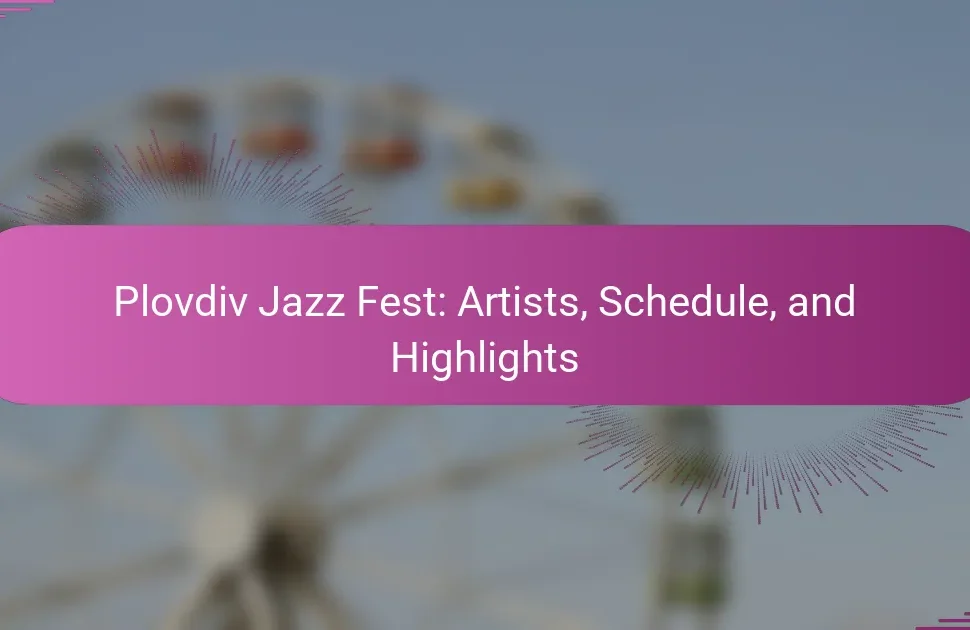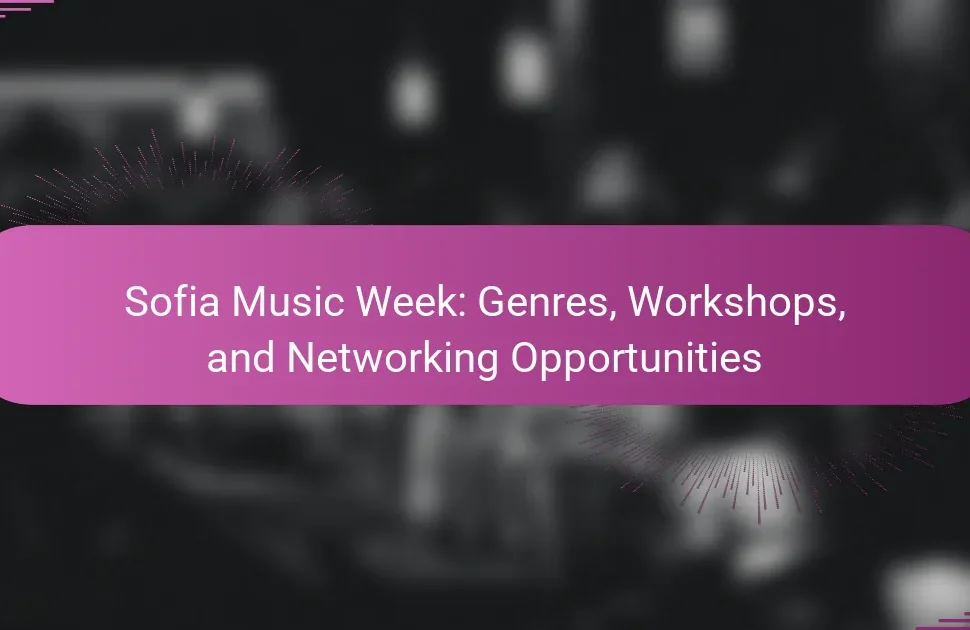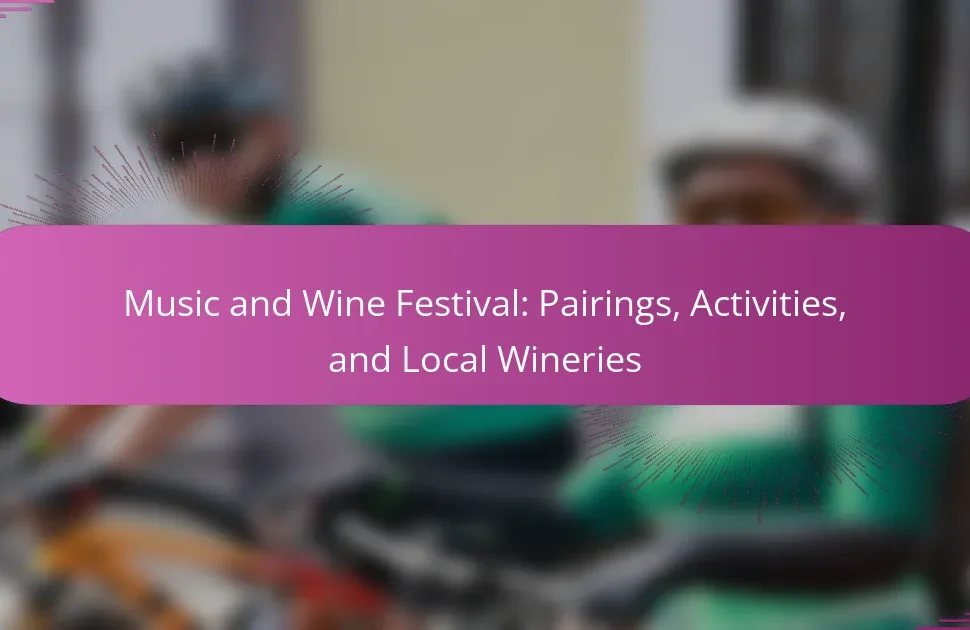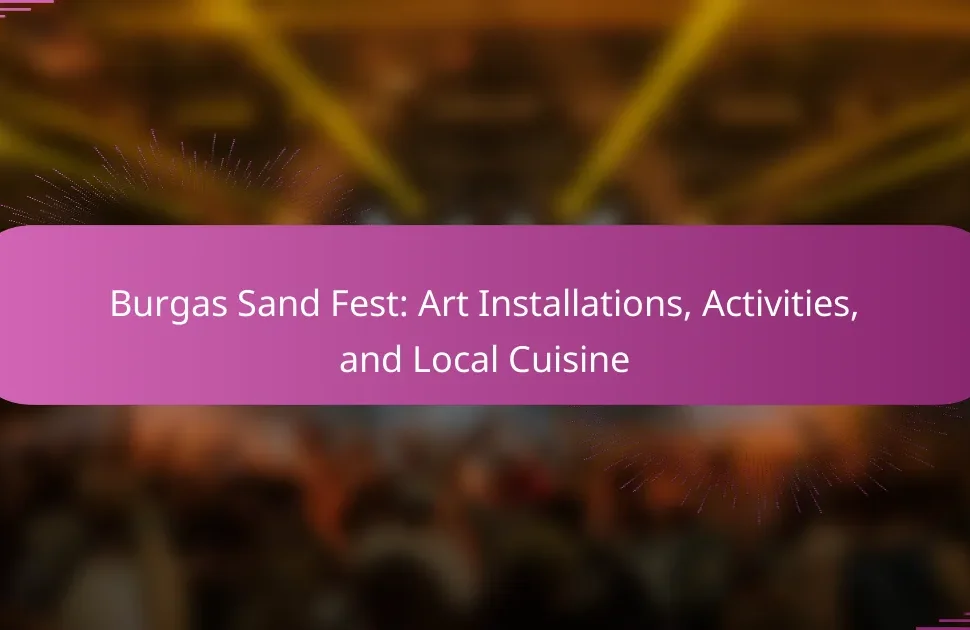The International Folklore Festival brings together over 50 countries to celebrate diverse cultural expressions through traditional dance. This event highlights unique styles like Flamenco, Bharatanatyam, and Hula, promoting cultural exchange and understanding. Participants engage in performances, workshops, and exhibitions, enriching the festival experience. Challenges such as financial constraints and logistical issues impact participation, but collaboration fosters inclusivity and deeper connections among cultures.
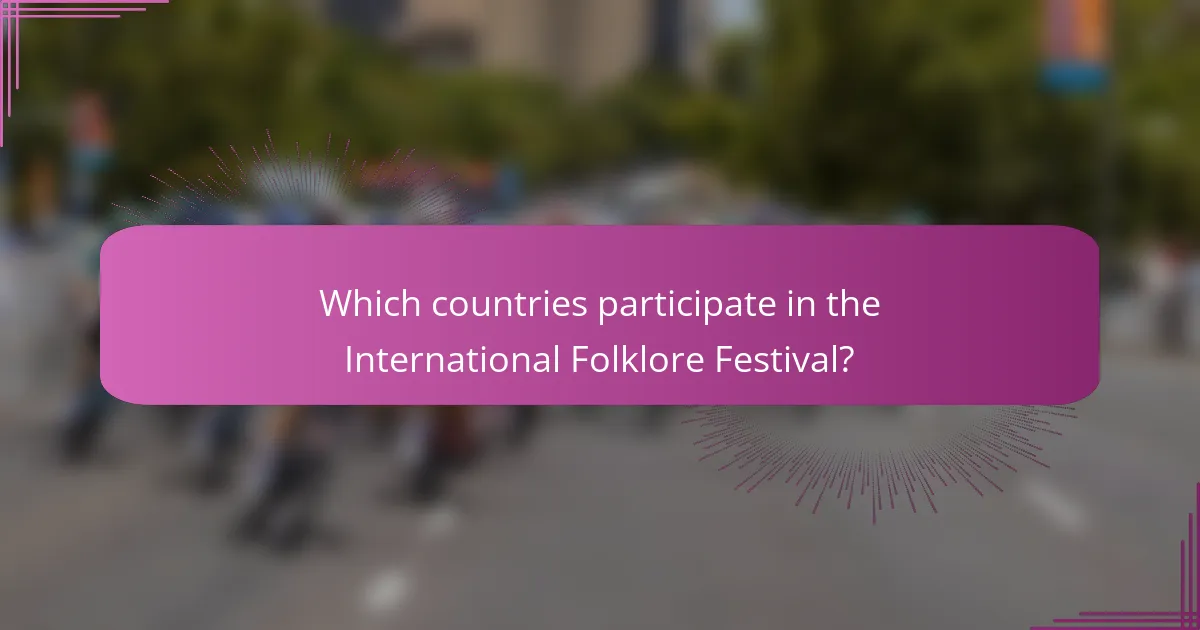
Which countries participate in the International Folklore Festival?
Countries participating in the International Folklore Festival include over 40 nations showcasing diverse cultural expressions. Notable participants are Brazil, India, Spain, and Morocco, each presenting unique dance styles and traditions. This festival promotes cultural exchange through performances, workshops, and exhibitions.
What cultural significance do these countries bring to the festival?
The cultural significance of participating countries in the International Folklore Festival lies in their unique dance styles and traditions. Each country showcases its heritage, fostering cultural exchange and appreciation. For instance, traditional dances from countries like Brazil and India highlight their vibrant histories and social narratives. This festival promotes understanding and respect among diverse cultures, enriching the global community. Additionally, the exchange of dance techniques and stories enhances creativity and collaboration among performers.
How do participation rates vary by region?
Participation rates in the International Folklore Festival vary significantly by region. For instance, countries in Europe typically have higher participation rates compared to those in Asia and Africa.
| Region | Participation Rate (%) | Notable Dance Styles | Cultural Exchange Activities |
|—————|————————|—————————-|——————————–|
| Europe | 75 | Ballet, Flamenco | Workshops, Performances |
| Asia | 50 | Bharatanatyam, Kabuki | Collaborative Shows |
| Africa | 40 | Zulu Dance, Adumu | Cultural Dialogues |
| Americas | 60 | Salsa, Tango | Community Events |
| Oceania | 30 | Haka, Aboriginal Dance | Cultural Festivals |
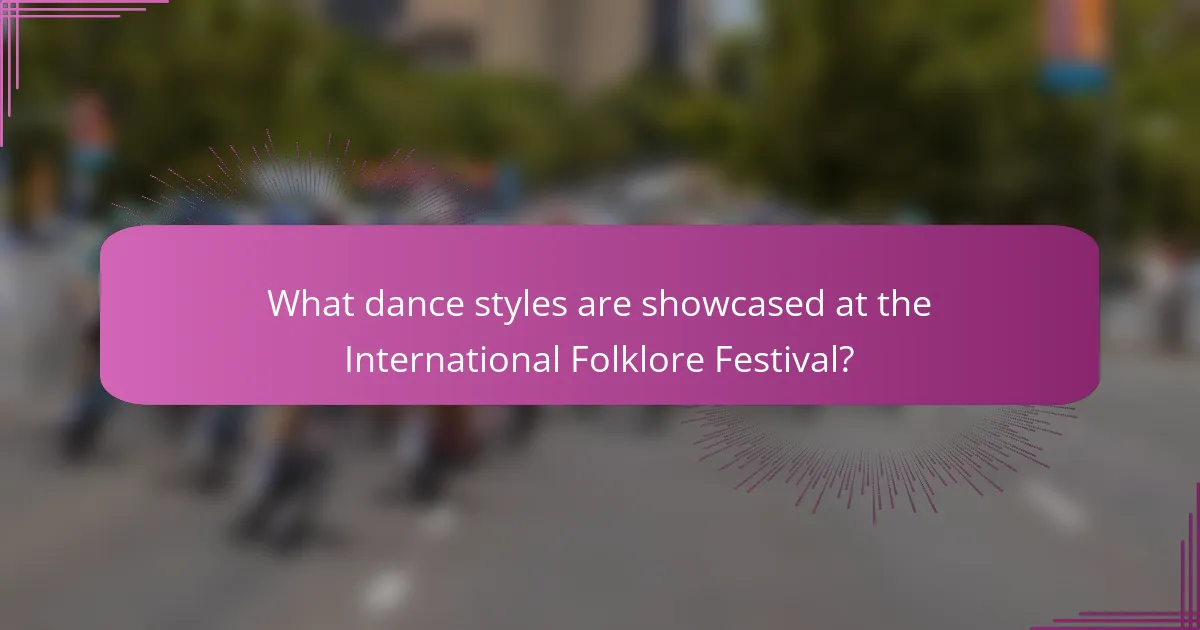
What dance styles are showcased at the International Folklore Festival?
The International Folklore Festival showcases diverse dance styles from various cultures. Participating countries present traditional dances such as Flamenco from Spain, Bharatanatyam from India, and Hula from Hawaii. Each style reflects unique cultural narratives and community values, enhancing the festival’s mission of cultural exchange. Performances often include vibrant costumes and live music, immersing audiences in the rich heritage of each represented nation.
How do traditional dance styles differ among participating countries?
Traditional dance styles vary significantly among participating countries, reflecting their unique cultural identities. Each country showcases distinct movements, music, and attire. For instance, flamenco from Spain emphasizes passionate footwork and intricate hand movements, while the hula from Hawaii incorporates fluid gestures representing nature. In contrast, Indian classical dance forms like Bharatanatyam focus on storytelling through precise expressions and intricate footwork. Additionally, African dance often features rhythmic body movements and communal participation, highlighting social cohesion. These differences enrich the International Folklore Festival, fostering cultural exchange and appreciation.
What role do contemporary adaptations play in festival performances?
Contemporary adaptations enhance festival performances by integrating modern elements into traditional art forms. This fusion promotes cultural exchange and engages diverse audiences. For instance, countries participating in the International Folklore Festival often showcase their unique dance styles while incorporating contemporary music and choreography. This approach not only preserves cultural heritage but also makes it relevant to current generations. As a result, festival performances become dynamic platforms for cultural dialogue and innovation.
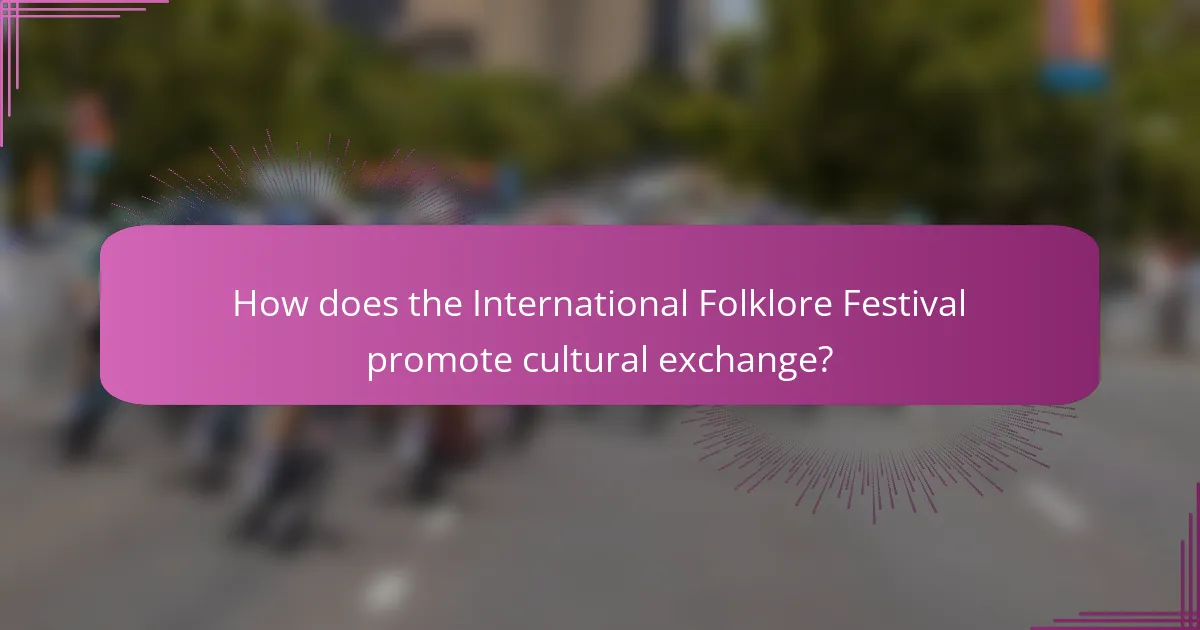
How does the International Folklore Festival promote cultural exchange?
The International Folklore Festival promotes cultural exchange by showcasing diverse dance styles and traditions from participating countries. This event fosters connections among cultures, allowing artists to share their heritage through performances. By engaging audiences, the festival cultivates appreciation for global diversity and encourages dialogue between different cultural backgrounds. Each participating country contributes unique attributes, enriching the overall experience and promoting understanding among attendees.
What are the benefits of cultural exchange for participating countries?
Cultural exchange benefits participating countries by enhancing mutual understanding, fostering cooperation, and promoting diversity. It allows nations to share traditions, art, and values, creating a richer cultural tapestry. Participants experience personal growth through exposure to different perspectives, which can lead to innovative ideas and solutions. Additionally, cultural exchange strengthens diplomatic ties and can boost tourism and economic opportunities.
How do workshops and collaborative performances enhance cultural understanding?
Workshops and collaborative performances significantly enhance cultural understanding by fostering direct engagement among participants. They create immersive experiences that allow individuals to learn about diverse traditions, dance styles, and artistic expressions.
Through shared activities, participants gain insights into the values and histories of different cultures. For instance, the International Folklore Festival showcases various dance styles from participating countries, promoting appreciation for cultural diversity.
Moreover, these interactions often lead to the formation of lasting relationships, encouraging ongoing cultural exchange. As a result, workshops and performances serve as vital platforms for building empathy and respect among diverse communities.
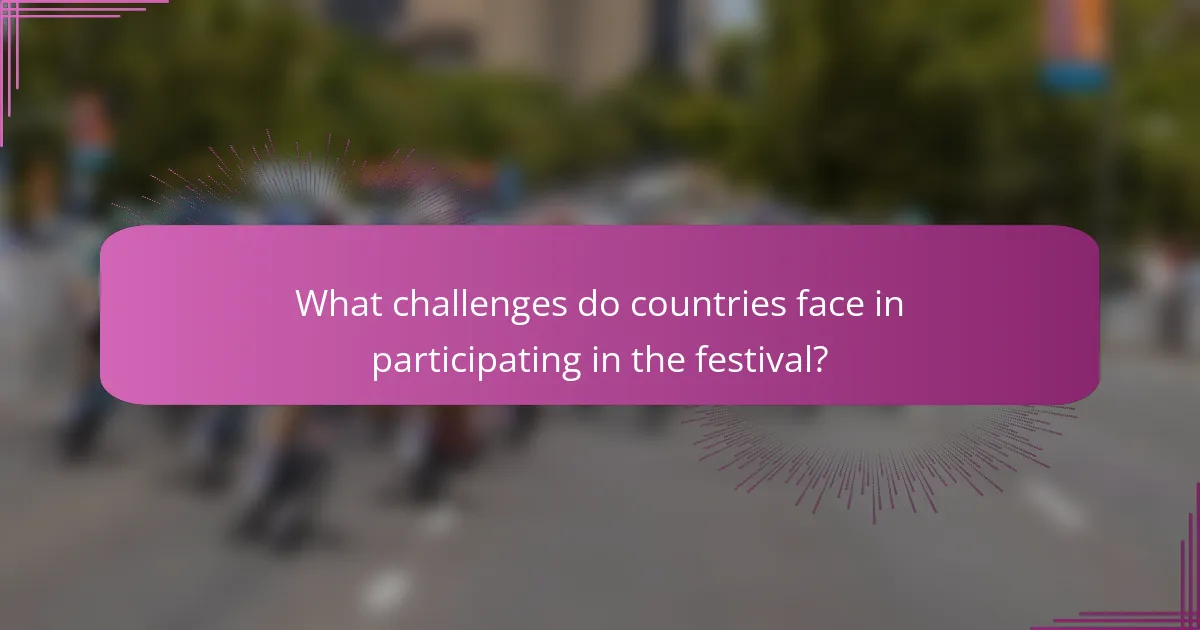
What challenges do countries face in participating in the festival?
Countries face several challenges in participating in the International Folklore Festival. These include financial constraints, logistical issues, cultural differences, and varying levels of government support.
Financial constraints often limit the ability of countries to send delegations or present their cultural performances. Logistical issues, such as transportation and accommodation, can complicate participation. Cultural differences may lead to misunderstandings or misinterpretations of performances. Additionally, some countries may lack sufficient government support, impacting their ability to engage fully in the festival.
Addressing these challenges requires collaboration and resource sharing among participating nations to enhance cultural exchange and promote inclusivity in the festival.
How do logistical issues impact participation?
Logistical issues significantly hinder participation in the International Folklore Festival. Challenges such as transportation, accommodation, and visa processes can limit the number of countries and dance styles represented. For example, countries with stringent visa requirements may struggle to send performers. Additionally, inadequate transportation networks can disrupt travel plans, affecting timely arrival and participation. These factors can diminish cultural exchange opportunities, impacting the festival’s overall diversity and richness.
What cultural sensitivities must be considered?
Cultural sensitivities in the International Folklore Festival include respect for traditions, understanding local customs, and awareness of historical contexts. Participating countries may have unique dance styles that reflect their heritage, requiring sensitivity to cultural representation. Misinterpretation can lead to offense, so fostering open dialogue is essential. Collaboration with local cultural representatives ensures authenticity and respect during performances.

How is the festival evolving in 2025?
The International Folklore Festival is evolving in 2025 by increasing participation from diverse countries and introducing new dance styles. This year, over 50 countries will showcase their unique cultural heritage, promoting a deeper cultural exchange. Emerging dance styles include contemporary adaptations of traditional forms, enhancing audience engagement. Additionally, workshops and collaborative performances will foster interaction among participants, creating a more immersive experience. As a result, the festival will strengthen its role as a global platform for cultural dialogue and appreciation.
What new features or themes are being introduced this year?
This year, the International Folklore Festival introduces new themes focusing on sustainability and digital cultural exchange. Participating countries will showcase traditional dances alongside modern interpretations, enhancing cultural connections. Notable dance styles include African drumming, Balkan folk dances, and Asian martial arts, reflecting global diversity. The festival will also feature workshops emphasizing cultural storytelling and collaborative performances, fostering deeper understanding among nations.
How is technology influencing the festival experience?
Technology significantly enhances the festival experience by facilitating cultural exchange, showcasing diverse dance styles, and connecting participating countries. Live streaming enables global audiences to engage with performances in real-time. Virtual reality offers immersive experiences, allowing viewers to explore festival environments and traditions. Social media platforms foster community interaction, enabling attendees to share their experiences and connect with artists. Mobile apps provide schedules, maps, and information, improving navigation and accessibility. These technological advancements create a more inclusive and engaging atmosphere for both participants and audiences.
What are the best practices for engaging with diverse audiences at the festival?
Engaging with diverse audiences at the International Folklore Festival involves inclusive programming and cultural sensitivity. Prioritize showcasing a variety of dance styles to reflect participating countries. This approach fosters appreciation and understanding among attendees.
Utilize multilingual signage and translation services to enhance accessibility. Engaging local communities in planning can also ensure authentic representation. Create interactive workshops that allow attendees to experience different cultures firsthand. This promotes deeper connections and enriches the festival atmosphere.
Collect feedback from diverse groups to continuously improve engagement strategies. Tailoring experiences based on audience preferences can significantly enhance participation and satisfaction.

